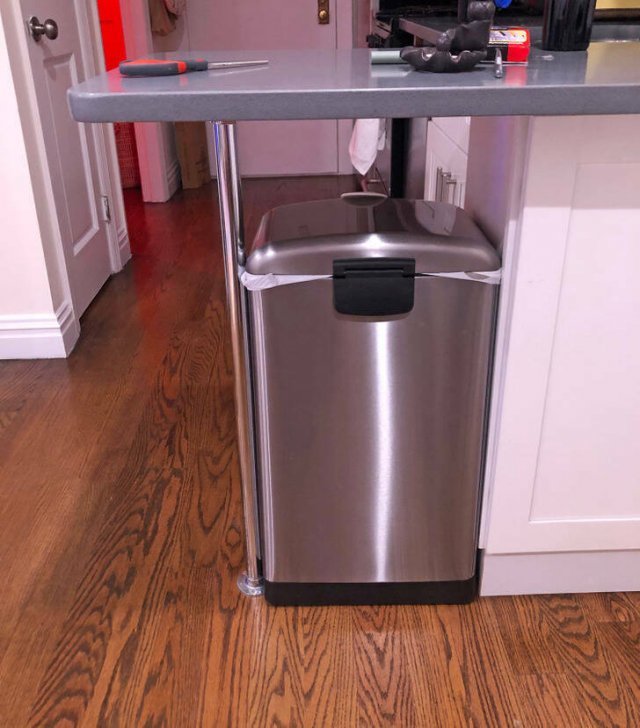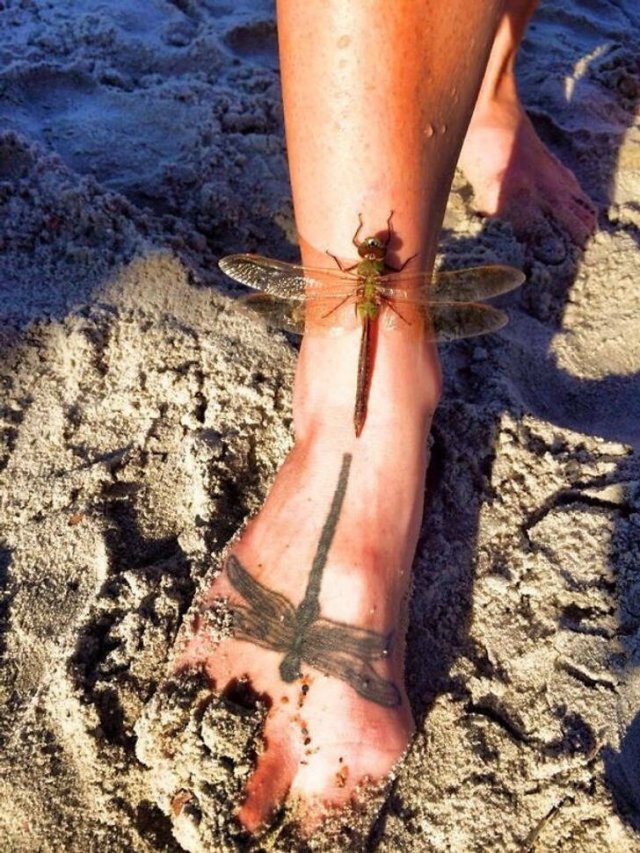The newest registered user is bitaacademy
Our users have posted a total of 44655 messages in 6574 subjects

WORLD CLOCK
NAT GEO * Japan's 2011 megaquake left a scar at the bottom of the sea. *
Valley of the Sun Casual Club :: WORDS , FACTS , DATES , GAMES & TRIVIA & HISTORY :: NATIONAL GEOGRAPHIC
 NAT GEO * Japan's 2011 megaquake left a scar at the bottom of the sea. *
NAT GEO * Japan's 2011 megaquake left a scar at the bottom of the sea. *


Japan's 2011 megaquake left a scar at the bottom of the sea. Scientists finally explored it.
A towering cliff in the Japan Trench of the Pacific Ocean “is unlike anything that’s been observed by science before.”
BYROBIN GEORGE ANDREWS
PUBLISHED JANUARY 22, 2024
They were enveloped in an oppressive darkness. The sun, miles above, had vanished long ago. Through tiny windows, they could see the seafloor’s sediments glimmering in the submersible’s headlights. Curious fish flitted around their vessel.
Carefully navigating the inky-black waters was a little like “driving in a car at midnight along a mountain road,” says Hayato Ueda, a geoscientist at Niigata University in Japan and one of the sub’s two occupants.
Ueda and pilot Chris May searched the darkness in their claustrophobic vessel, and eventually a lofty geologic monument emerged from the shadows: an 85-foot-tall cliff climbing into the ocean above. The exposed crest of a cataclysmic rift in Earth’s crust, exactly where Ueda predicted it would be, was part of one of the worst disasters in modern history.
This cliff is a scar of the 2011 Tōhoku earthquake that struck off Japan’s eastern shores. That year, on March 11, the magnitude 9.1 temblor deep within the Pacific Ocean unleashed a catastrophic tsunami that hit Japan, killing around 20,000 people and leaving half a million homeless.
[size=11][size=11]About this map
[/size]
In the past decade, scientists have studied the quake by decoding its seismic waves and scanning the depths with sonar. But getting a detailed understanding of what caused the seafloor to convulse required something that initially seemed impossible: examining part of the rupture site in person, within the Japan Trench, almost five miles below the waves.
In 2022 scientists made that ambitious mission a reality. They secured a privately owned deep-sea vessel, the DSV Limiting Factor—a submersible cleared to safely take people down to the crushing, benighted seafloor.
Plunging into the Japan Trench, the divers eventually came upon the incongruous cliff. As reported in a study the journal Communications Earth and Environment, the team determined that this cliff represented the top of a section of a chunk of crust that jumped up by over 190 feet during the 2011 earthquake.

Cracked rubble seen on the ocean floor in the Japan Trench during a 2022 dive to study the results of the calamitous 2011 earthquake.
PHOTOGRAPH COURTESY NIIGATA UNIVERSITY
This appears to be “the very absolute tip of the fault that generated that massive earthquake,” says Harold Tobin, director of the Pacific Northwest Seismic Network at the University of Washington, who wasn’t involved in the study. “In this one place, the tip came all the way to the surface and pushed everything up. And they tagged it, they identified it directly in the field. And that’s incredible.”
Uplift features like this have been observed on land, but this is the first time one has been glimpsed by humans in a deep-sea subduction zone trench. This “is unlike anything that’s been observed by science before,” says Christie Rowe, an earthquake geologist at McGill University who was also not involved with the study.
[/size]
Decoding a disaster
The entire rupture happened over a vast section of the abyss. To have created so much uplift, the fault responsible must have moved about 330 feet near the epicenter during the quake—the largest fault movement of its kind on record. The violently uprooted cliff that resulted was part of the reason the quake generated a calamitous tsunami.
The location of this megaquake is not so surprising. The Japan Trench is a major quake-making machine; since 1973, it has produced nine temblors above magnitude 7. This frequent shaking occurs because the trench is a subduction zone, where the colossal Pacific tectonic plate is being forced underneath the Okhotsk microplate.
But even so, the 2011 quake proved surprisingly powerful. It struck a little westward of the Japan Trench, about 18 miles below the seafloor, causing a gargantuan rupture over a 24,000-square-mile area. Seismic waves from the event and sonar-like mapping conducted by ships before and immediately after the quake suggested the fault responsible moved as much as 200 feet—an almost unbelievable amount, and still less than the recent expedition has ascertained.
“The Tohoku earthquake was obviously a massive watershed event. It’s a game changer in lots of ways,” says Tobin. Unraveling that fault’s behavior matters not just to Japan, but to anywhere in the world that will one day experience its own subduction-zone triggered tsunami, including the U.S. Pacific Northwest, which was inundated by a major tsunami three centuries ago.
The geologic jolt in Japan seemed so extreme that scientists wanted to find the physical evidence of it at the site itself. “It’s like what a geologist would do in the field,” says Tobin. “Except this happens to be eight kilometers [five miles] below the surface of the water.” At those high-pressure depths, most submersibles—including robotic ones—would malfunction or implode.
Enter: DSV Limiting Factor. Built by the American manufacturer Triton Submarines, and funded and owned by Victor Vescovo—an investor, former naval officer, and undersea explorer—this highly durable two-person vessel can dive down to 36,000 feet, making it one of the only submersibles capable of the journey into the Japan Trench.
“It’s an incredible submarine,” says Tobin.
Illuminating the abyss
In September 2022, drifting on the Pacific’s midnight-blue waves aboard the support boat DSSV Pressure Drop, Ueda and his colleagues perused their geologic and bathymetric charts. “I had to decide the exact point where the submersible will land,” he says. “I carefully read topography from the map and selected the most probable point where the fault features could exist.”
A proverbial X was scored on the map. They were ready. On September 4, Ueda and pilot Chris May climbed into the two cramped seats of the DSV Limiting Factor and began their quest into the depths.
After several hours they reached the seafloor within the Japan Trench. Ueda had visited oceanic depths before, but nothing this deep and dark. Throughout their dive, video cameras mounted on the outside of the submersible recorded their traversal, including the approach to the 85-foot-high cliff that did not exist prior to the 2011 quake.
“On the way floating up to the sea surface, I had much time—I don't remember well, but perhaps two hours or more—to consider about what I saw,” says Ueda. When he rewatched the video recordings from the dive, he became confident: this was something known as fault scarp, a part of the earthquake’s surface breakthrough that causes a change in elevation.
But the cliff was only the very top of the uplift. To properly measure its scale, the submersible had risen to the feature’s peak—and as it ascended, its pressure sensors were used to calculate the height difference between the basin floor at the clifftop. It was 194 feet—the seafloor’s vertical displacement at this location during the 2011 megaquake, according to the study.
The seafloor likely rose along many parts of the gigantic rupture in the Pacific, but this section jumped up by the height of a 14-story building. “That displacement is at least part of the tsunami source,” says Tobin.
Quakes of the deep
Using this new information, the team estimates that the fault slipped by 260 to 400 feet in total at this location during the earthquake—a staggering amount, perhaps twice as much as previously suspected.
It’s a reasonable calculation, says Judith Hubbard, an earthquake scientist at Cornell University not involved with the study. But reconstructing fault geometry on land is troublesome. Doing the same work on the seafloor—doubly so. And in tectonic terms, this part of the crust is a tangled nightmare. “This is a really complicated area. There’s a huge amount of stuff going on,” Hubbard says.
Crucially, though, “they didn’t overdo their claims,” says Tobin, who considers the evidence direct, robust, and elegant. Scientists knew the 2011’s rupture’s slip was tremendous. “This case is as bulletproof as you’re ever going to get,” he says.
The 2011 quake still retains much of its mystery. This site represents just a small section of an expansive rupture, and each part behaved uniquely during the fault’s mighty jolt. “It is difficult to provide an idea or story about the entire disaster,” says Ueda.
But this study has already set a new benchmark for untangling the depths and enigmas of subduction zone megaquakes. “I didn’t know it was technically possible” to make this journey to the seafloor, says Rowe. “I’m super pumped. It’s like being an astronaut.”
This work will bring protective benefits to Japan’s shores, and it will no doubt provide scientific succor to other coastal nations. Over the past two decades, an increasing number of tsunami early-warning systems have been placed in the world’s oceans. They rely on catching the seismic waves from aquatic quakes and quickly analyzing them.
But scientists are sometimes surprised. A tsunami can be forecast, but it can be more significant than predicted, or considerably smaller—or even nonexistent. The most important question is: “How big is that scarp on the seafloor? Because that’s your tsunami trigger,” says Rowe.
Using this study and other research to tweak tsunami forecast models could bolster efforts to save lives in future geologic disasters.
“It was surely fantastic to see such important features that nobody has ever seen. I'm honored to find it,” says Ueda. But he recounts his discovery with a somber note. “It might be this cliff that took more than 20,000 lives.”
 Similar topics
Similar topics» MORE GR8 CLASSICS FROM ANDYSON & MORE
» Left Handed Players
» QUIZ TREAT ANSWER PAGE
» JUST LOCAL STUFF
Valley of the Sun Casual Club :: WORDS , FACTS , DATES , GAMES & TRIVIA & HISTORY :: NATIONAL GEOGRAPHIC

 Events
Events















































































» THE FUCK THREAD
» GET OUT THE MAP...3
» BEFORE & AFTER...2
» YES,.....BUT...2
» *POPULAR CONTENTS* Valley of the SUN Official Newsletter
» WORD DAILY Word of the Day: * Dada *
» Word Genius Word of the day * recherché *
» QUIZ TREAT QUIZ * What candy bar is famously called "the great American chocolate bar"? *
» QUIZ TREAT ANSWER PAGE
» APRIL NATIONAL CELEBRATION DAYS APRIL 30 2024
» NEW GUEST COUNTER
» APRIL NATIONAL CELEBRATION DAYS APRIL 29 2024
» HISTORY FACTS * Why don't we drink these anymore? *
» AWESOME SPORTS GIF's...7